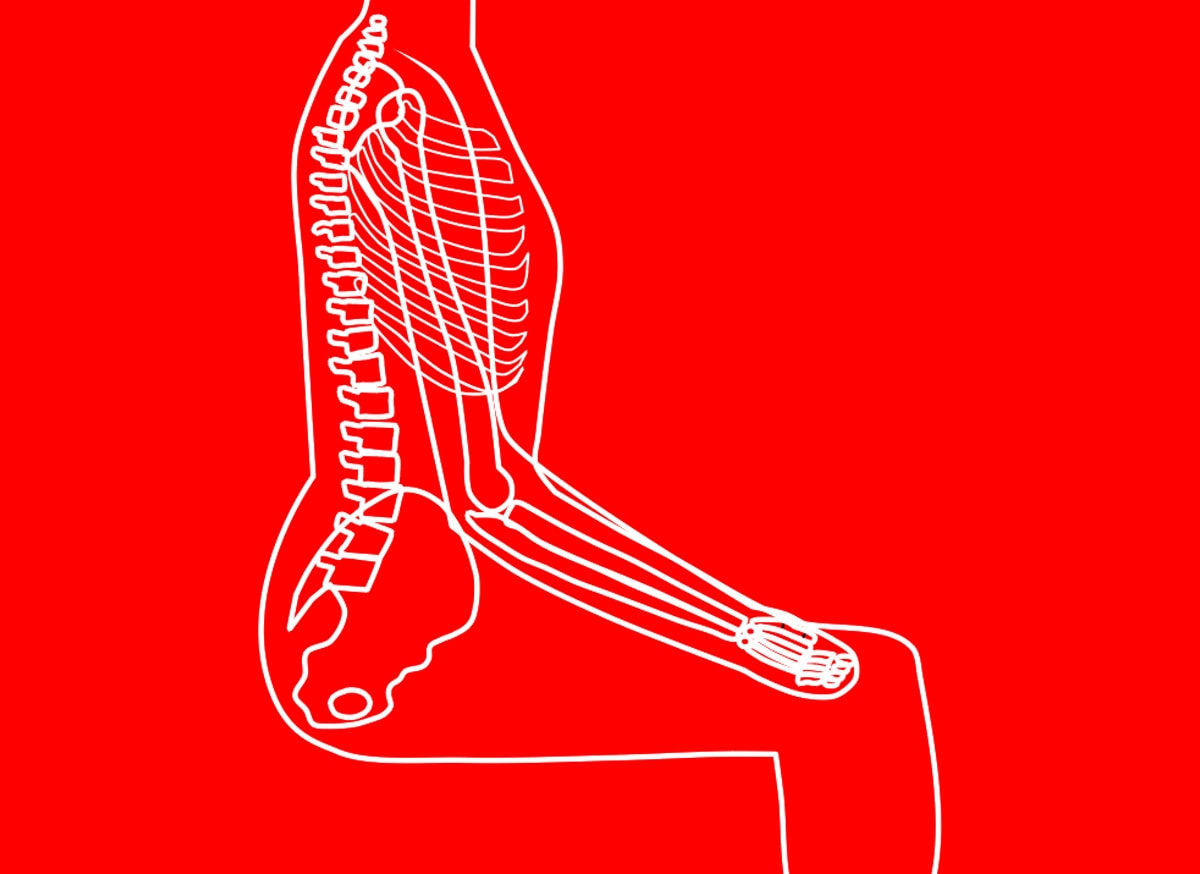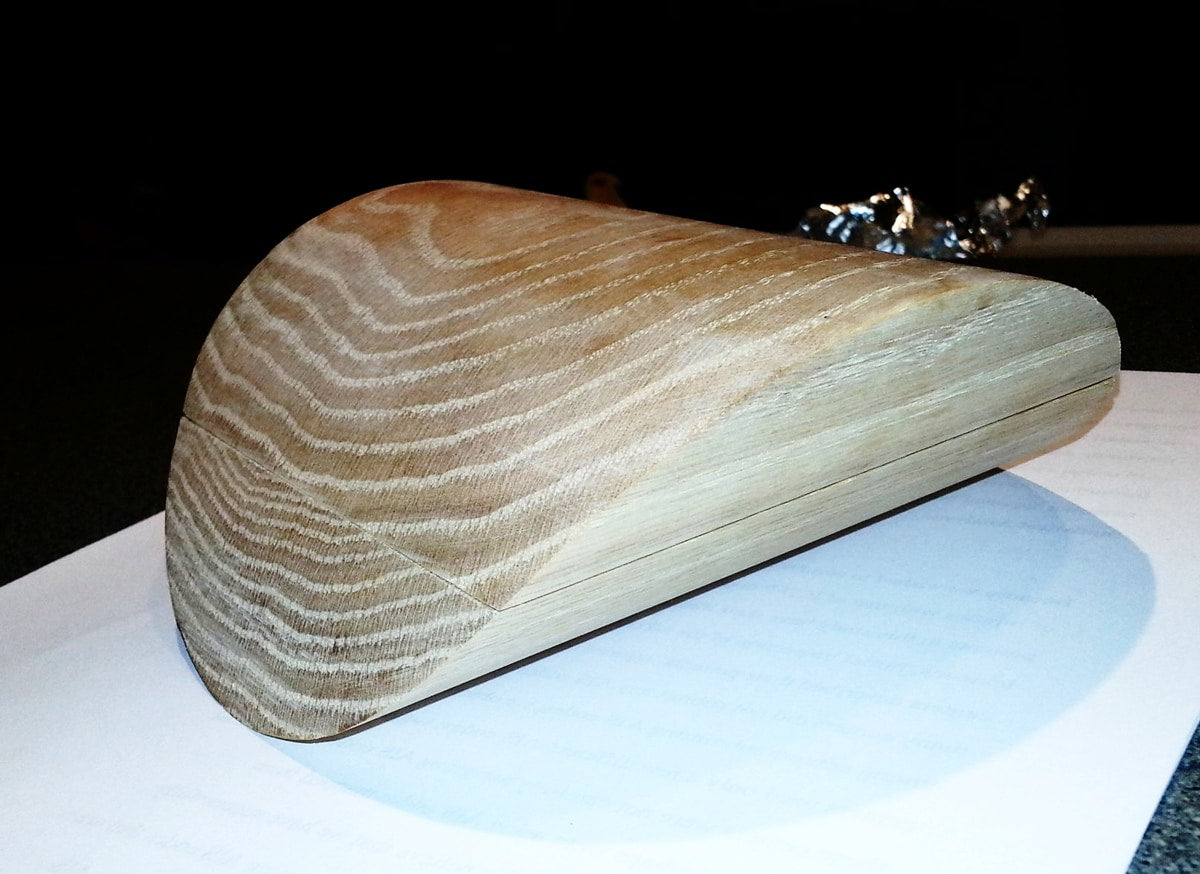Posture is response of the body to gravity. It is the moment to moment conversation our bodies have with gravity. This conversation begins at birth, and continues as babies first lift their head, then creep, then crawl, then toddle and finally stand. Throughout this awakening of the body the spine is adapting to gravity, developing the normal curves in the lower back, thorax and neck that allow for perfectly balanced, calorically efficient standing and sitting while at rest. Simultaneously the body is also developing muscular reflexes that facilitate efficient posture, reflexes that adjust the spine moment to moment to assure balanced, stable posture. Importantly, these reflexes also allow the spine to adjust on the fly to surprises that might cause a fall if not compensated for.
Unfortunately, standard chairs distort the perfect posture that we develop throughout our childhood, by providing “support” that distorts our posture. The back rest, arm rests, foot rests, head rests all require that the spine respond with new, unusual, conformations. Unfortunately, these new, unusual, conformations can cause discomfort in the short run: witness the frequent changes of sitting positions required when sitting for more than a few minutes. Worse, over time real pain syndromes can develop: over 80% of Americans will visit an emergency room for low back pain at some point in their lives, something not seen in cultures that have not adopted chairs as the standard format for sitting (e.g. Japan).
Because our brains are embodied in our bodies, posture also affects the mind. This is in part the basis of yoga and meditation: certain postures help the mind to find its groove. Because active sitting profoundly affects posture, it is likely that it also improves mental states. This is a hypothesis that seems not to have been explored; we hope by making active sitting available to as many people as possible that we’ll be able to examine this hypothesis.
I’ve referred to “spinal reflexes” a few times, but I’m not sure this phrase actually is English; it might be a medical reference that doesn’t have much resonance for most people. But spinal reflexes are very real and very important. For example, if you put your hand on a hot stove you will immediately and involuntarily jerk it away, before you actually feel the heat or pain. What has happened is that the information “you’re burning your hand” is conveyed up the nerves of the arm to the spinal cord. At the spinal cord this information is sent on to two places: 1. to your brain where it registers in your consciousness as “you burned your hand”, and 2. to the flexor muscles of your arm which immediately flex and thus jerk your hand away from the stove. This direct connection of the pain sensors in your hand to the flexor muscles in your arm at the spinal level is called a spinal reflex. The result is mysterious, almost magical: you move your arm before you feel the burning of your hand. This reflex has obvious advantages, because the sooner you remove your hand from the stove the less injured you will be.
If you want to experiment with spinal reflexes without injury, you might try this: Lie on the floor and relax completely, eyes closed for two or three minutes. Then, still with your eyes closed look strongly up (toward the wall “above” your head) and very slowly and deliberately, lift your head 1/2 inch off the ground, noting how much effort this maneuver requires. Rest for one minute, thinking about how hard or easy this might have been for you. Now, still with your eyes closed, look strongly down (toward your feet), and again, very slowly and deliberately, lift your head 1/2 inch off the ground, noting how much effort is required now. Most people find that the subjective effort to raise their head is different, depending upon where the eyes are looking. The explanation for this oddity is that the positioning of the eyes powerfully affects the availability of the muscles of the neck through spinal reflexes. We are so accustomed to our spinal reflexes that we usually don’t notice their effects, working silently in the background. It is only through experiments that we can discover just how much of our life is actually reflexive.
Spinal reflexes can also be triggered simply by the position of the spine. These reflexes are responsible for the automatic readjustment of posture that allows us to restore our equilibrium if we should trip while walking. These same reflexes are invoked by our QOR360 chairs: when the pelvis tips, spinal reflexes immediately and automatically restore one’s balance by making a myriad of small adjustments to the spine. And all this happens automatically, below the level of consciousness. You’re free to listen in on this conversation between your spine and gravity, but most people just get on with their workday.
Because our chairs allow one to outsource picking a comfortable posture to your spinal reflexes, you’re free to think about other things, confident that when you stand up at the end of the day your spine will be as fresh as when you sat down at your desk.
-Dr. Turner Osler





Leave a comment
All comments are moderated before being published.
This site is protected by reCAPTCHA and the Google Privacy Policy and Terms of Service apply.